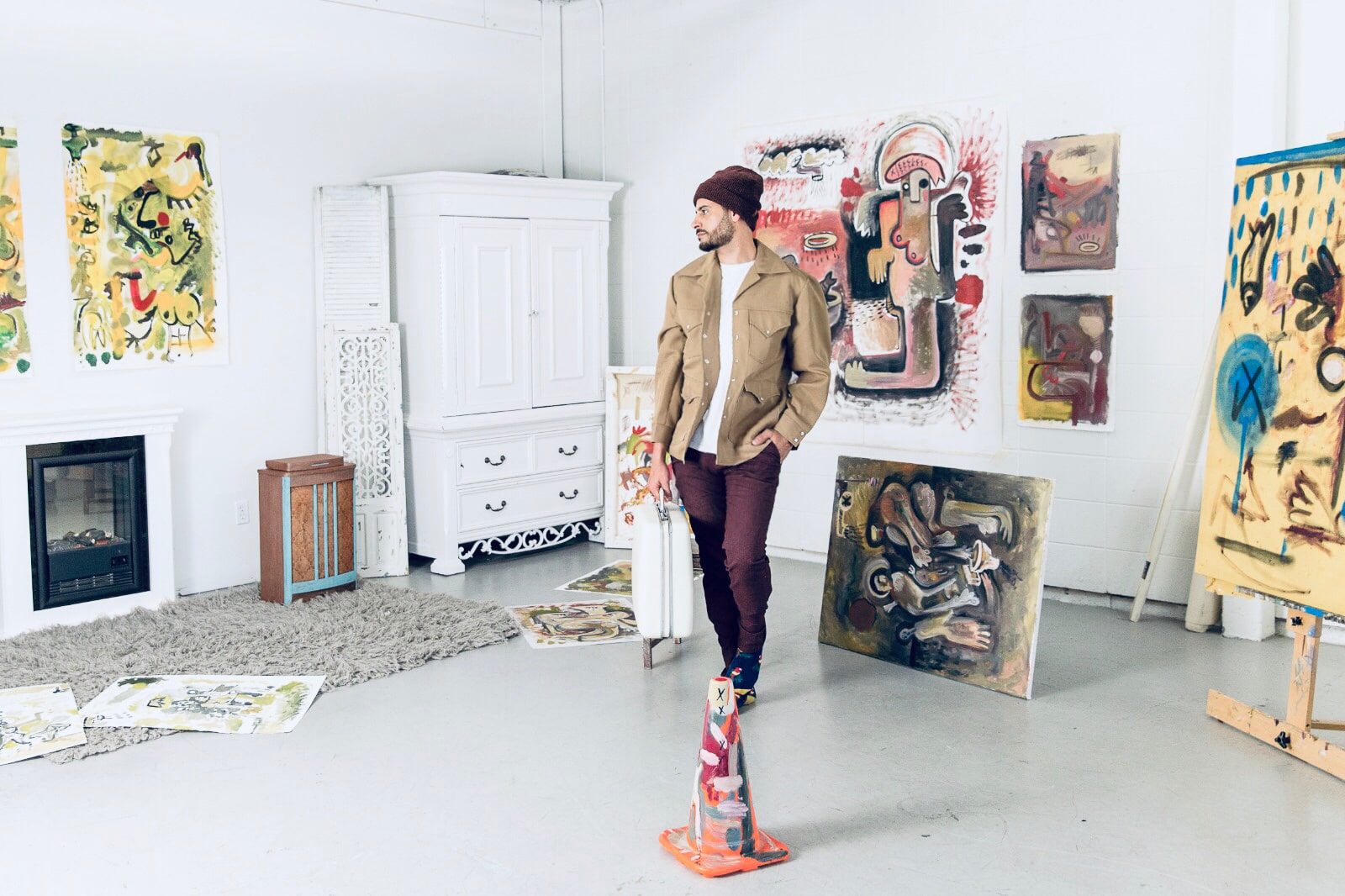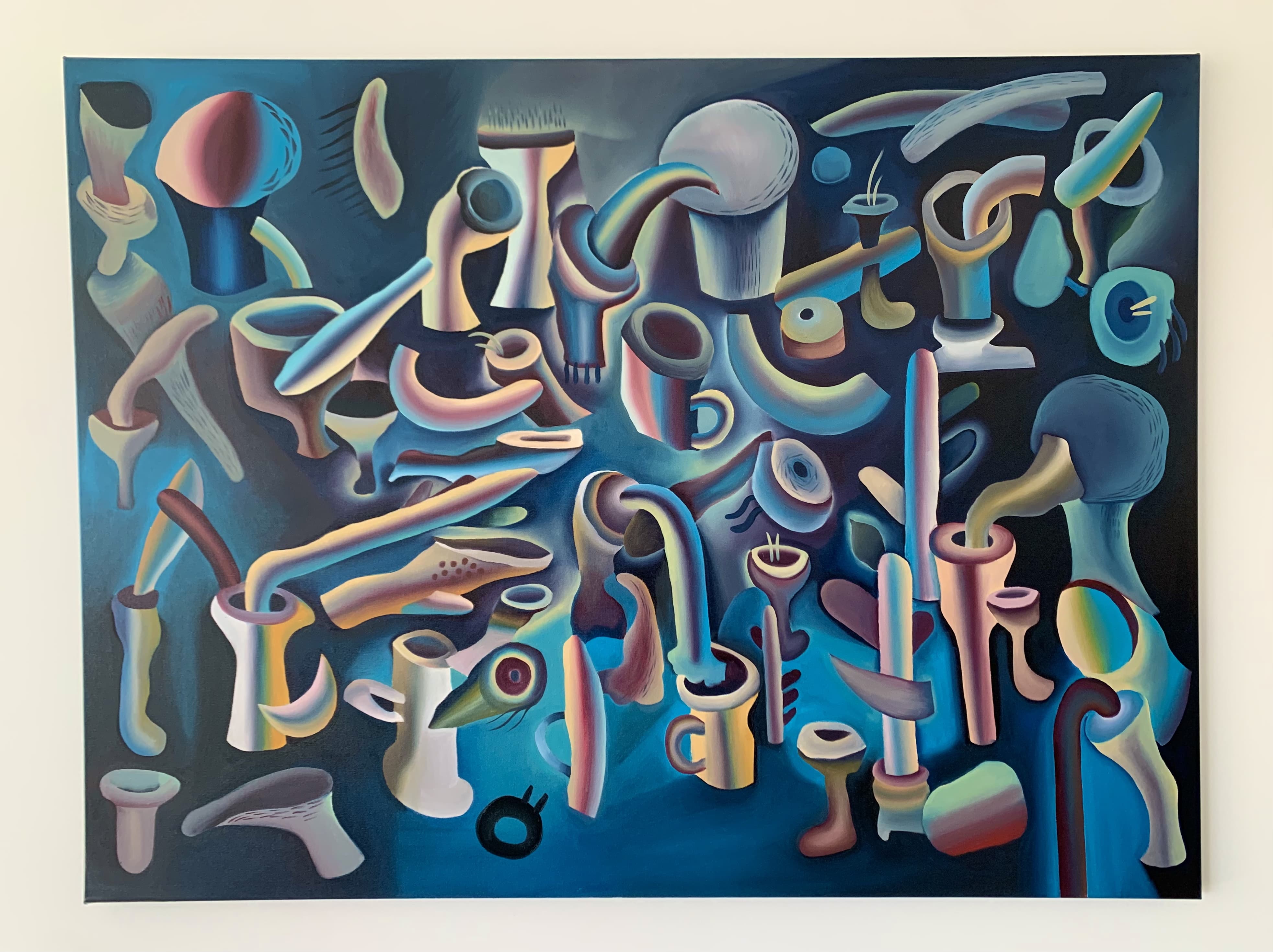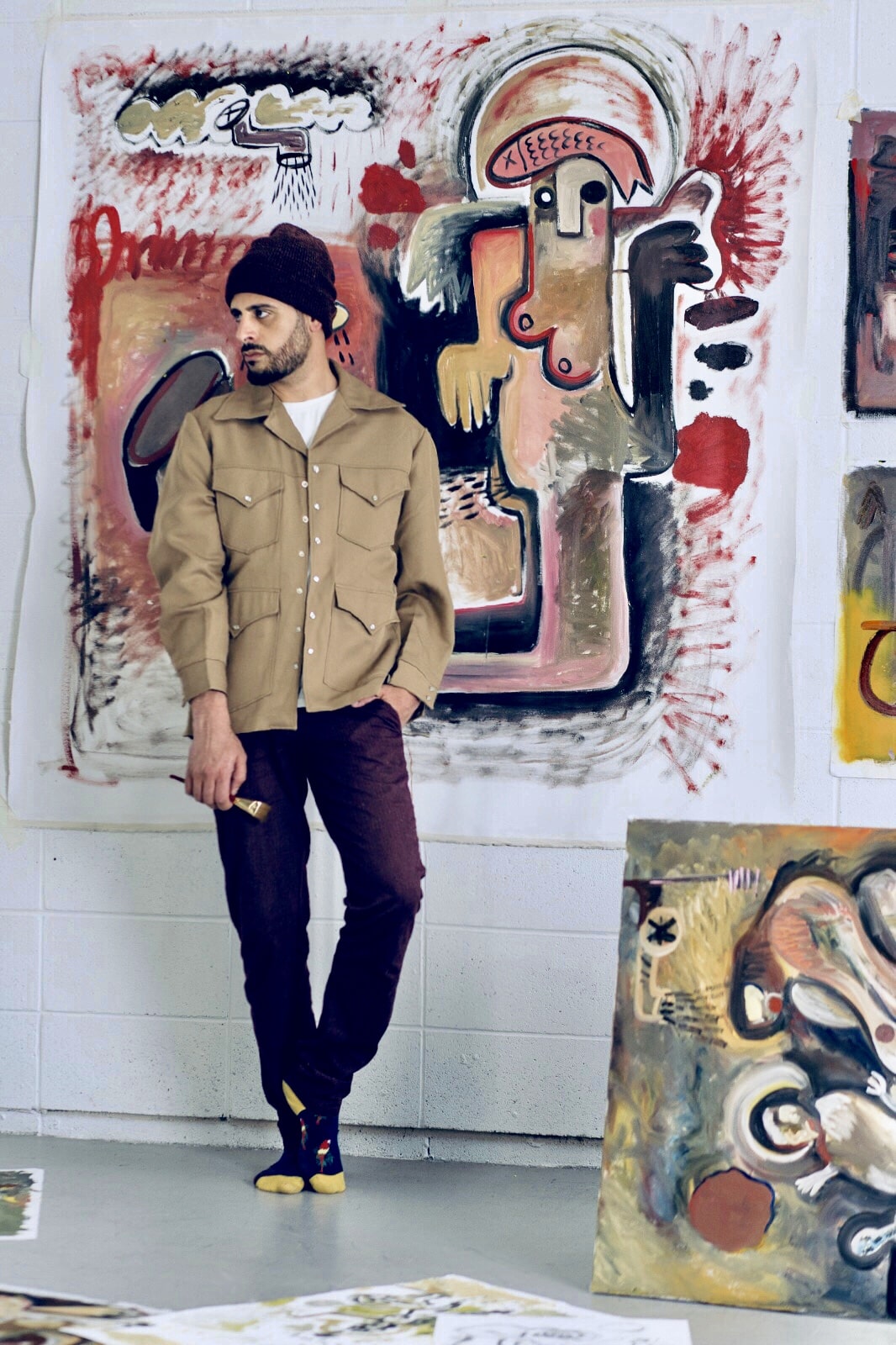Lifestyle
Art Under Occupation: Palestinian-Canadian artist Hanny Khoury talks art, identity, and belonging

Palestinian-Canadian artist Hanny Khoury has spent years thoughtfully exploring his identity, trying to establish his understanding of what it means to be Palestinian.Art has always been his lifeline, an outlet where he channels frustrations and emotions, seeking a means of representing his past in a way that empathizes with an international audience. From Palestine to Canada, his journey has been difficult and encouraging, a true redemption arc that’s far from over.
Khoury grew up in a small village in historical Palestine-one of six children-under the Israeli occupation. As far back as he can remember, his identity, and the identities of his family and neighbors, were conflated with the information being spread by the occupation. “You are a Palestinian, a minority living under occupation. The environment is weird, nothing is clear.You can’t identify yourself and you don’t grow up with a clear identity that’s solid,” says Khoury.“From school to the media, the occupation is basically programming your brain, to make you forget your identity.”

Art was the one thing that could ground Khoury to something tangible. It was a means of coping with the instability of his daily life and allowed him to express his confusion. As he describes, it was a means of creating an entirely new world: “It’s like I was creating my own environment, my own life, the way I wanted it to be. With time, art became a healing process for me. It became the one thing through which I rebuild the relationship with everything around me and make peace with it. Heal it. That’s how art spoke to me. Art became like food for me, or water.”Even when his parents struggled to afford necessities, his mother would use soil and flowers to make natural pigments he could paint with. Walls, doors, broken pieces of wood-anything could serve as a canvas in Khoury’s eyes.
Eventually, after years of tension, both internally and with his environment, he made his way to Canada. This fresh start opened his mind, and he finally found the space and time to focus on his practice. It was during this period that he began to consider the parameters of being a Palestinian artist in a contemporary context. As a child, Khoury’s sources of artistic inspiration were limited to what was acceptable under the occupation. Names from Western art history, like Salvador Dali and Pablo Picasso, were tolerable, but examples of Palestinian art were scarce. “Back then, I didn’t have anything that made me a Palestinian artist. I got this sense of belonging later in life, through my own research. I developedan awareness about our existence as Palestinians and then my art started to belong to the history and the story of Palestine. Before that, I didn’t have the opportunity to learn that information,” says Khoury.

Through his studies and careful research, Khoury began to form his own idea about the critical difference between being a Palestinian artist and producing Palestine art. “I think the Palestinian story of identity loss, it had its own time,” he explains.“Silman Mansour, Nabil Anani, Ismail Shammout-those artists had to do it because they had to construct their identity and the identity of the Palestinian people. For us, as the young generation in or from Palestine, we must do something different. We have to work with an international language, while still belonging to the Palestinian identity.” Khoury’s search for identity is also a search for expression, finding a way to leverage Palestinian form to resonate on an international, even universal, level.
Currently represented by Mark Hachem Gallery, Khoury’s work is set to make an impression on audiences around the world. He has already made great strides with his ability to translate his own experiences into a visual, emotionallanguage that anyone can connect with. “What I have suffered in my life, the experiences, the journey I had in Palestine-this is what developed my international language of art. This is where it came from. The figures, the colors, the balance. Everything that makes up my work is Palestinian, but the figures themselves aren’t necessarily Palestinian,” he explains. “Art is translating the time period that we live in, visually.The modern world of art is not translating specific moments, it’s translating specific emotions. We talk about our conflicts, our difficulties, our pain, the system. That’s what we talk about as artists. So, when we look at art, it should deliver emotion. It doesn’t necessarily have to do with belonging to the physical world. It can be connected to the emotional world, or faith.” Confident and passionate, Khoury is forging ahead with a new vision of what Palestinian art could be, offering the next generation of young artists what he was denied growing up: an inspirational figure.
Lifestyle
Wanda Knight on Blending Culture, Style, and Leadership Through Travel

The best lessons in leadership do not always come from a classroom or a boardroom. Sometimes they come from a crowded market in a foreign city, a train ride through unfamiliar landscapes, or a quiet conversation with someone whose life looks very different from your own.
Wanda Knight has built her career in enterprise sales and leadership for more than three decades, working with some of the world’s largest companies and guiding teams through constant change. But ask her what shaped her most, and she will point not just to her professional milestones but to the way travel has expanded her perspective. With 38 countries visited and more on the horizon, her worldview has been formed as much by her passport as by her resume.
Travel entered her life early. Her parents valued exploration, and before she began college, she had already lived in Italy. That experience, stepping into a different culture at such a young age, left a lasting impression. It showed her that the world was much bigger than the environment she grew up in and that adaptability was not just useful, it was necessary. Those early lessons of curiosity and openness would later shape the way she led in business.
Sales, at its core, is about connection. Numbers matter, but relationships determine long-term success. Wanda’s time abroad taught her how to connect across differences. Navigating unfamiliar places and adjusting to environments that operated on different expectations gave her the patience and awareness to understand people first, and business second. That approach carried over into leadership, where she built a reputation for giving her teams the space to take ownership while standing firmly behind them when it mattered most.
The link between travel and leadership becomes even clearer in moments of challenge. Unfamiliar settings require flexibility, quick decision-making, and the ability to stay calm under pressure. The same skills are critical in enterprise sales, where strategies shift quickly and no deal is ever guaranteed. Knight learned that success comes from being willing to step into the unknown, whether that means exploring a new country or taking on a leadership role she had not originally planned to pursue.
Her travels have also influenced her eye for style and her creative pursuits. Fashion, for Wanda, is more than clothing; it is a reflection of culture, history, and identity. Experiencing how different communities express themselves, from the craftsmanship of Italian textiles to the energy of street style in cities around the world, has deepened her appreciation for aesthetics as a form of storytelling. Rather than keeping her professional and personal worlds separate, she has learned to blend them, carrying the discipline and strategy of her sales career into her creative interests and vice versa.
None of this has been about starting over. It has been about adding layers, expanding her perspective without erasing the experiences that came before. Wanda’s story is not one of leaving a career behind but of integrating all the parts of who she is: a leader shaped by high-stakes business, a traveler shaped by global culture, and a creative voice learning to merge both worlds.
What stands out most is how she continues to approach both leadership and life with the same curiosity that first took her beyond her comfort zone. Each new country is an opportunity to learn, just as each new role has been a chance to grow. For those looking at her path, the lesson is clear: leadership is not about staying in one lane; it is about collecting experiences that teach you how to see, how to adapt, and how to connect.
As she looks to the future, Wanda Knight’s compass still points outward. She will keep adding stamps to her passport, finding inspiration in new cultures, and carrying those insights back into the rooms where strategy is shaped and decisions are made. Her legacy will not be measured only by deals closed or positions held but by the perspective she brought, and the way she showed that leading with a global view can change the story for everyone around you.
-

 Tech5 years ago
Tech5 years agoEffuel Reviews (2021) – Effuel ECO OBD2 Saves Fuel, and Reduce Gas Cost? Effuel Customer Reviews
-

 Tech6 years ago
Tech6 years agoBosch Power Tools India Launches ‘Cordless Matlab Bosch’ Campaign to Demonstrate the Power of Cordless
-

 Lifestyle6 years ago
Lifestyle6 years agoCatholic Cases App brings Church’s Moral Teachings to Androids and iPhones
-

 Lifestyle5 years ago
Lifestyle5 years agoEast Side Hype x Billionaire Boys Club. Hottest New Streetwear Releases in Utah.
-

 Tech7 years ago
Tech7 years agoCloud Buyers & Investors to Profit in the Future
-

 Lifestyle5 years ago
Lifestyle5 years agoThe Midas of Cosmetic Dermatology: Dr. Simon Ourian
-

 Health7 years ago
Health7 years agoCBDistillery Review: Is it a scam?
-

 Entertainment6 years ago
Entertainment6 years agoAvengers Endgame now Available on 123Movies for Download & Streaming for Free
